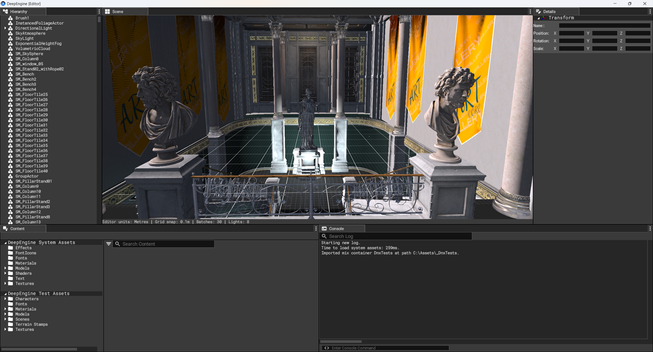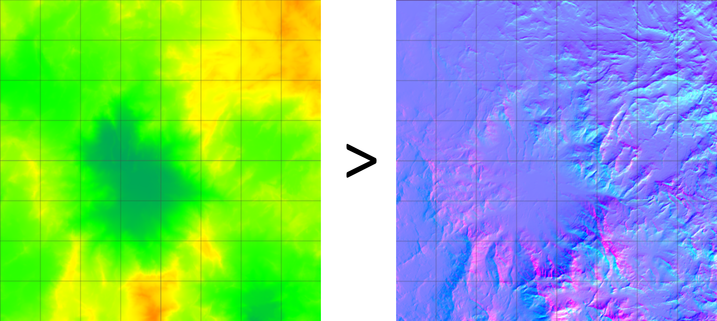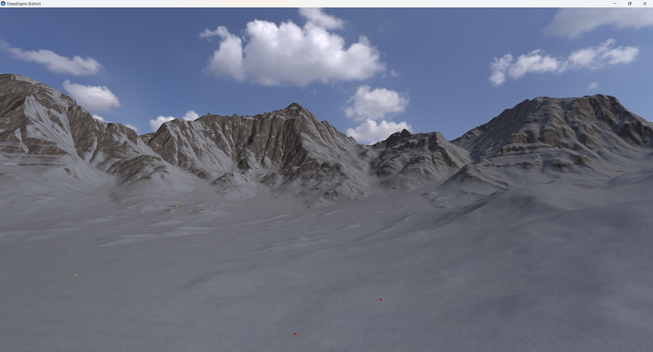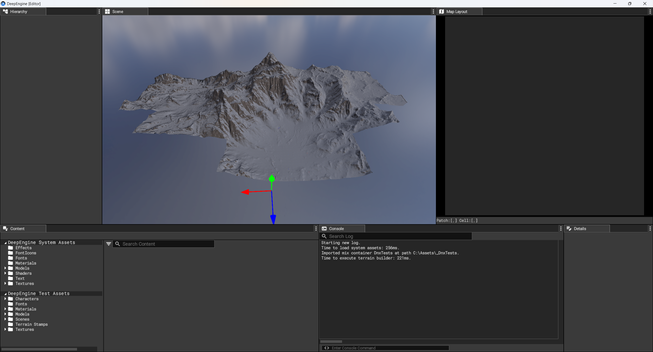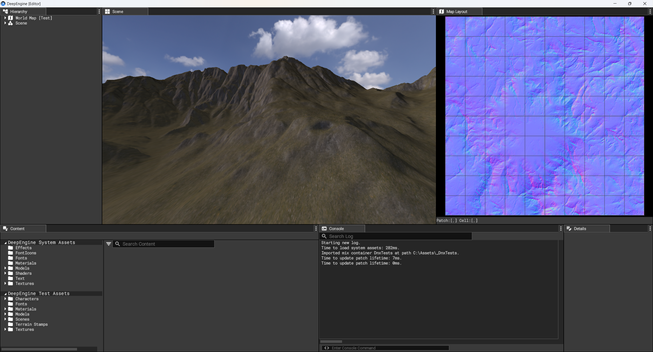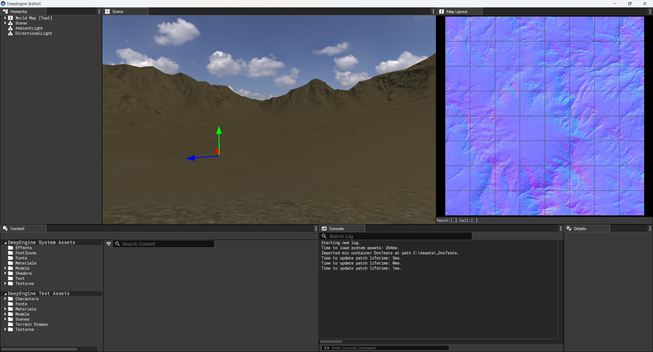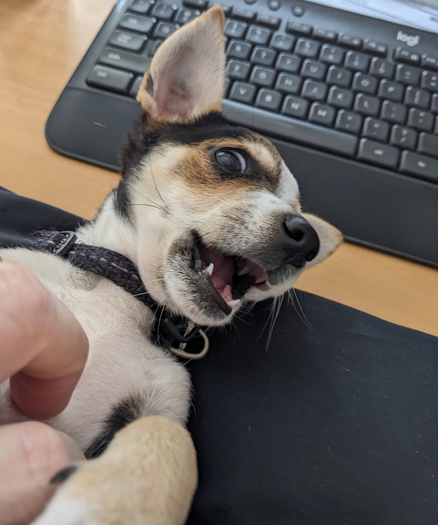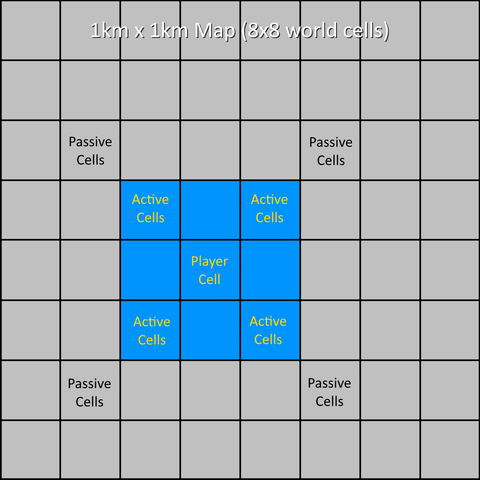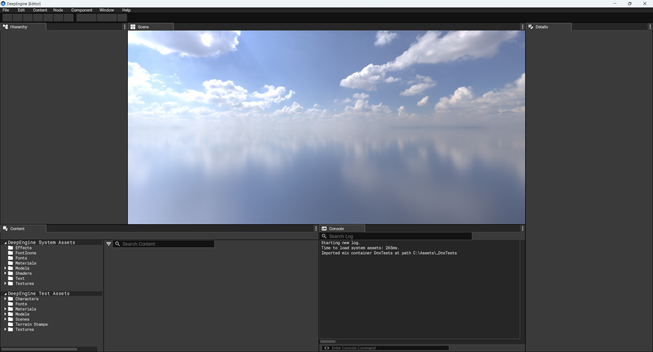In Project Arroa: Revenwood, Dougal’s Glade is where the player starts their adventure. It’s also a sandbox where I can experiment with production, art styles, and gameplay. This post explores the concept along with a few additional details.
https://dev.interkarma.net/2025/02/21/dougals-glade-concept/
Hello! I'm the creator of Daggerfall Unity.
Now working solo on my next game "Project Arroa: Revenwood"
My first devlog for 2025 is now up! Read about my work over the last month preparing Deep Engine to render trees and foliage. After more than a year working on engine and tools, I'm finally ready to make some progress on the actual game.
https://dev.interkarma.net/2025/02/03/trees-foliage/
Prefab view now has a functional search and drag-drop into scene view. That last part only took about 10 mins to setup the basics thanks to putting in the effort to build a universal drag and drop system for UI several months back. Engine tools are starting to come together!
Started work on a prefab packing system for engine. This is the beginning of tools to import large numbers of discrete assets and their materials for building up scenes. Using a pack of 2000+ Synty assets for bside testing here. Next step is assembling assets in scene!
I'm at the point where I'm ready to take my game engine for a real test drive with some internal prototypes. I'll tag these with #bside so you know I'm sharing supplementary development.
Adding more editor bits and bobs so I can assemble blockout scenes and save/load my work. The console will do a lot of heavy lifting during these early stages. It's starting to look like a proper editor now, even if it's still a basic one.
World Management & Terrain – Part 2 is now ready! Check out how I'm making terrain for Project Arroa: Revenwood in Deep Engine, with lots of detail and screenshots.
https://dev.interkarma.net/2024/10/27/world-management-terrain-part-2/
If you're wondering what editor mode and what's going on, a key pillar of Project Arroa: Revenwood is a desktop-quality editor built directly into the runtime for modding and inspecting state while the game is live. The game is the engine is the editor is the game.
If you notice bits of terrain missing in editor mode, this is a limitation of terrain currently where visibility and LOD updates are linked to a single camera. Not intentional, though it's cool to can see camera culling at work behind the scenes.
Quick example of popping in and out of editor mode. Whatever is happening in live scene is paused and the editor camera can float around to inspect what's going on. Still very rudimentary, but it's good to get these foundations down early.
First test using a base and overlay texture blended by surface steepness. With this setup, I'll be able to mix textures and control how they're painted over terrain based on params. Will also allow for quick procedural painting followed up with manual painting as required.
Starting work on terrain texturing using a triplanar with color overlay setup. Currently just stretching a grass texture over the entire terrain to check triplanar shader working, and I'll build out from here.
A little scene picking and testing continuous level of detail terrain patches over 10sqkm flat terrain. Bar scene for scale. The red tiles are the highest LOD patches near camera in X-Z plane. Some optimisation still needed.
New instance, same #introduction
Hi I'm Pierre, changed from Lego geek to computer geek at 11 when I touched a computer; they weren't that common in '80.
Studied computing at uni, became software #developer. Worked in several #startups, but not only.
Switched main OS to #linux in 1996. From time to time I contribute to #freesoftware projects, last to date being #DaggerfallUnity.
I enjoy #jazz #music (sometimes play #drums, but I need to replace my aging kit now), or #photography #nature.
@pango So far in my project, I'm using compute shaders heavily in the lighting pipeline to generate equirect cubemaps, build LUTs for BDRF, and precompute irradiance maps. Now building terrain from stamps and working on texturing and planting foliage on terrain all using GPU. Other possible uses I'm looking at is GPU-based frustum culling and realtime occlusion culling. Can offload all kinds of problems to GPU. :)
@pango Hey Pango! :) Compute shaders can execute C-like code directly on GPU and work on arbitrary data in a highly parallel way (hundreds of threads at once operating on different blocks of data no problem). Here's a 10-min quickie about rendering animated grass like that seen in Ghost of Tsushima that sold me on learning more earlier this year.
https://youtu.be/bp7REZBV4P4?si=xhqQh9k6s0VOEVQE
I'm late to this party and still have a lot to learn, but compute shaders are magical. Working on terrain right now, there are so many small but highly iterative jobs that can be offloaded to GPU. I wish I knew this stuff when making DFU.
We have a new puppy. This is me trying to code.
I've just posted the first in a series of devlogs about world management and terrain in Project Arroa: Revenwood.
https://dev.interkarma.net/2024/09/24/world-management-terrain-part-1/
A clear skybox enclosing an open void. In the next few small stages, I'm building a simplified version of a terrain stamping editor so I can get the basics down first using the tools I've already built. This empty world is my starting canvas.
